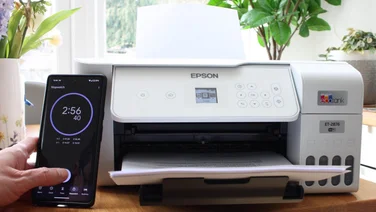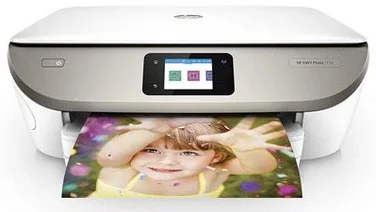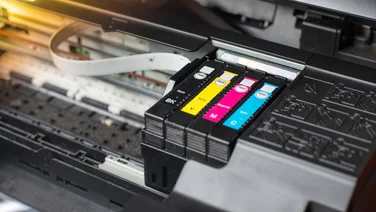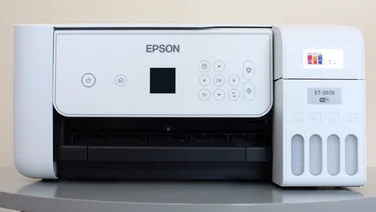To help us provide you with free impartial advice, we may earn a commission if you buy through links on our site. Learn more











The Gear 360 looks like something out of a futurist’s dream, an off-white sphere that’s been plucked directly from Valve’s Portal games. And it’s this bizarre-looking device that Samsung is hoping will usher in the next wave of its VR masterplan. Thanks to its dual 180-degree cameras, the Gear 360 is capable of shooting full 360-degree video footage – which finally gives you the chance to create your own VR photos and movies.
Design

At £350, the Gear 360 is not cheap. Pick it up, however, and it feels supremely solid and sturdy. It’s around the size of a snooker ball, and its 153g weight means that it feels reassuringly heavy, too. Granted, it is slightly heavier and has a larger profile than the Ricoh Theta S and LG 360 Cam, but it’s not exactly cumbersome. If you’ve ever spent any time with a snooker ball in your pocket, you’ll know what to expect.
It’s also IP53 certified, with rubber-sealed ports in place to keep it safe from the outside world. But while you’ll be reasonably well protected against sand or dust, don’t expect it to handle anything more than light rain or the occasional splash of water. In short, don’t be tempted to submerge this in the pool – it’s water-resistant, not waterproof.
Features
The first sticking point is that you’ll need one of a select handful of Galaxy smartphones to get the proper VR experience. If you don’t have a Galaxy S6, S6 Edge, S6 Edge+, Note 5, S7 or S7 Edge, then you’ll be missing out on several of the Gear 360’s features.
And if you’re expecting to get a microSD card in the box then think again. Few, if any, cameras come with an SD card as standard, but it still feels like Samsung is being a bit stingy here. With a £350 device, you’d reasonably expect to actually be able to use the thing straight out of the box. Still, you do at least get a little protective bag and carry strap to make it easier to lug around.

The small 0.5in 72 x 32 PMOLED display at the top of the camera lets you select basic settings without being connected to a phone, and tiny icons give you an at-a-glance summary of the current settings alongside an estimate of how much recording space you’ve got left on your SD card. The only downside is that the display isn’t particularly bright, and is tricky to see in bright sunlight – but at least you’ve got one, unlike the Ricoh Theta S.
One very sensible feature is that there’s a tiny LED light above each lens to indicate which lens is in use. This means you have literally no excuse for accidentally snapping a selfie while setting the thing up.
Sadly, you can’t use both lenses for 360-degree footage without a compatible handset, but it’s nice that the Gear 360 isn’t entirely useless to non-Samsung smartphone owners. Using the menu and back buttons on the side, you can quickly flit between video, photo, timelapse and video looping shooting modes; switch between the two lenses; select the image quality; and set a timer up to a maximum of ten seconds.
Once you pair the camera with a Samsung phone via Bluetooth 4.1, though, it really steps up a gear. Firing up the dedicated app gives you a live view direct from the camera, and you can also toggle HDR on and off, and tweak individual settings such as white balance, exposure and ISO levels at the same time. This makes it much easier to start shooting, and while you can’t adjust zoom levels, the live view is invaluable for capturing the best footage.
Picture quality
Capture quality is impressively crisp and detailed thanks to the twin 15-megapixel sensors. In practice, the results are miles better than the Ricoh Theta S’ twin 12-megapixel cameras, and while the image quality won’t blow away a decent compact camera or DSLR, it’s by far the best we’ve seen from a 360-degree camera to date.
Recordings from a single sensor top out at a maximum resolution of 2,560 x 1,440, but combine the two sensors for 360-degree recording and that rises to a maximum of 3,840 x 1,920. Regardless of whether you’re recording 180- or 360-degree footage, though, you’re unlikely to have any major qualms with video quality.
As you’d expect, footage looks pin-sharp when viewed on a 5in smartphone screen, and while closer inspection on a larger screen does reveal soft edges and occasionally fuzzy areas of fine detail, the overall quality is very impressive indeed. It’s no surprise to find that the Gear 360 fares best in bright lighting conditions, though, and you’ll certainly notice increased noise and smeary compression artefacts creeping in as light levels fall.
Audio quality is less impressive. You’d definitely be better served with a dedicated microphone if you’re wanting to use it as a conference-call device, or even if you’re planning to use the footage for anything remotely professional. It does a basic job of picking up speech and background noise, but in most cases it really doesn’t do justice to the quality of the video footage.
Battery life is a bit of a tricky one to judge. I used the Gear 360 over the course of a weekend and, starting on full charge, it lasted just under a couple of days with relatively heavy use. However, as the Gear 360’s 1,350mAh battery is replaceable, you’ll be able to carry around spares if you’re planning on taking it out with you on a long adventure. It charges reasonably quickly, too, and only takes around two hours to get it back to full charge once it’s fully drained.
Sharing is caring
Clearly, one of the best parts of owning the Gear 360 is being able to share your footage with the world, and thankfully Samsung’s made that a fairly straightforward process. The removable microSD card makes it easy to upload your footage from a nearby laptop or PC, and you can upload directly from the app itself too if you’re so inclined. The Gear 360 Manager app automatically stitches together the footage from both sensors to create 360-degree content, but you can also do this manually via the Windows Action Director software.
As 360 VR-ready footage is still very much in its infancy, it’s often incredibly difficult to upload to a reasonable standard online. While sites such as Flickr offer VR image hosting, and do a good job of it, YouTube still has quite a tough time getting to grips with proper 360-degree video.
There are a couple of convoluted hoops you have to jump through to get past YouTube’s fussy upload system and even then, once it’s uploaded it can look incredibly over-compressed, as is clearly shown in my test footage. Of course, it’s hardly Samsung’s fault that YouTube has such a difficult time uploading 360-degree video, but Google really needs to step up its game here.
Verdict
For all its quirks, the Gear 360 camera is a remarkable little gadget. Thanks to the great quality of the dual cameras, solid build quality and overall design, there’s no denying that it’s a gadget lover’s dream – and it’s perfect for quickly capturing images and videos with a minimum of faff.

Ultimately, the most annoying limitation is the fact you’ll need a specific Galaxy smartphone if you don’t want to miss out on some of the Gear 360’s best features. This, paired with the lack of removable storage in the box, knocks off that fifth star straight away.
There are alternatives such as the £200 LG 360 Cam to consider, too, which despite its inferior image quality has the benefit of not being tied to any particular handset. If you can live with the Gear 360’s limitations, though, then your £350 will buy you the best 360-degree camera that money can currently buy.






